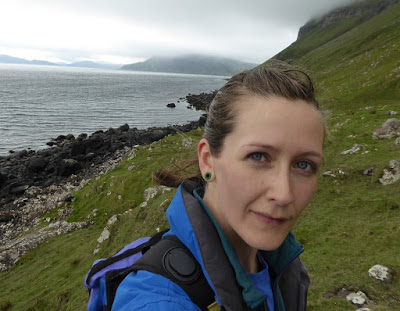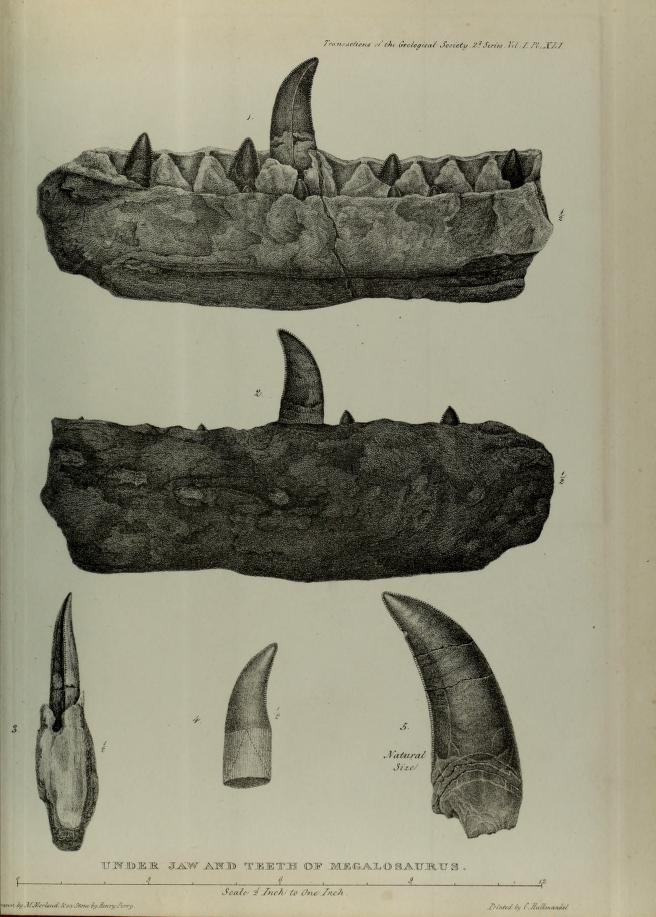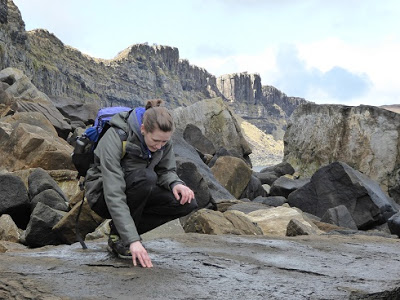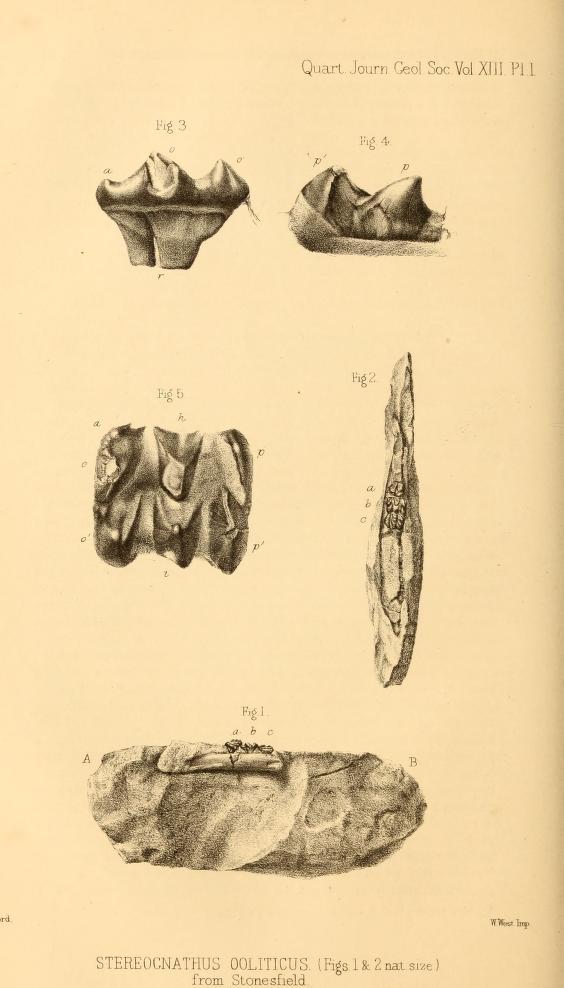Re-Examining the Jurassic Mammal Fossils of the UK
 |
| Elsa Panciroli, Palaeontology PhD candidate, at work on the Isle of Skye. Photo credit: Elsa Panciroli. |
Mesozoic mammal palaeontology is in the middle of a revolution. Since the first mammals and their closest mammal-like relatives were discovered in the early 1800s, most of the fossil record for these earliest ancestors of ours were fragments of jaw and isolated teeth, the size of rice grains. In the last fifteen years however, an increasing number of more complete skeletons have been found in China, radically changing our understanding of the first mammals. It turns out they were more diverse and ecologically specialised than anyone previously suspected.
Now we have new skeletons, it is more important than ever to pull together and sort through the historical fossil finds and descriptions. This means tracking down old and often obscure scientific papers. That’s how I discovered BHL.
My name is Elsa, and I’m in the third year of my PhD on the origin and evolution of mammals, at the University of Edinburgh and National Museums Scotland. My work centres on the spectacular fossils found on the Isle of Skye; a beautiful island in Scotland’s Inner Hebrides. The Middle Jurassic limestones of Skye are yielding the best Mesozoic aged mammal fossils found in the UK, and arguably among the best in the world.
The mammal fossils of Skye come from similar aged rocks to the very first Mesozoic mammal fossils ever described. In 1824, The Reverend William Buckland not only introduced the Victorian world to the meat-eating dinosaur Megalosaurus, but also a sturdy little mammal jaw, complete with little pointed teeth. This came to be called Phascolotherium. These fossils were recovered from the Stonesfield Slate of Oxfordshire. The rocks are Bathonian in age, a Jurassic time period spanning 168-166 million years ago.
 |
| Upper jaw and teeth of Megalosaurus. Buckland, William. Notice on the Megalosaurus or great Fossil Lizard of Stonesfield. Transactions of the Geological Society ser. 2, v. 1: 390-396. Digitized by California Academy of Sciences. http://s.si.edu/2y9Eb7M. |
Since Buckland’s initial description, the Bathonian rocks of the UK have been the most productive Mesozoic mammal strata. Many new species and genera have been identified from sites such as Kirtlington in Oxfordshire, and Watton Cliff in Dorset. In order to understand the relationships between the mammals we are now finding on Skye, and previous fossil finds, I’ve had to scour old journal articles and papers.
Thanks to the BHL, I’ve been able to read the original descriptions by William Buckland and Richard Owen, and those by the many great palaeontologists who followed them. To begin with, I had relied on sending hopeful emails to established colleagues to try and beg obscure old scientific papers from them. I came across BHL a few months into the first year of my PhD, via desperate searching for old articles online. To my delight, many of the old journals I needed were on their website. Once I found what I wanted, it was easy to select the relevant pages and generate a PDF, which BHL emailed to me within minutes. This service has to be one of the best things BHL offers.
From Richard Owen’s On the Jaws of Thylacotherium prevostii (Valenciennes) from Stonesfield (1838), to Clemens and Mills Review of Peramus tenuirostrus Owen (Eupantotheria, Mammalia) (1971), I’ve been able to track down papers unavailable elsewhere. These may be old, but without them I wouldn’t be able to appreciate the full scientific history of the specimens we are working on today, nor check on the references of previous authors who cited them.
 |
| Panciroli prospecting for Jurassic fossils in Northern Skye. Photo credit: Elsa Panciroli/Davide Foffa. |
Some of the papers BHL have been able to provide have had even more direct bearing on my own publications. They’ve also proven a test of BHL’s staff helpfulness – a test they passed with flying colours.
Many of the animals I study were not yet true-mammals; lacking the distinguishing skeletal characteristics that define this group, such as a dentary-squamosal jaw joint. They are instead, the closest relatives, referred to as mammaliaforms and mammaliamorphs. One such group are the Tritylodontidae. These animals would have looked a lot like mammals at first glance, but they are only a close-sister group. They split off from the mammals and charted their own course through evolutionary history, developing grinding teeth for eating vegetation, and growing much larger than their contemporaneous mammal cousins.
The first tritylodontid described was from the Jurassic of England, a creature called Stereognathus ooliticus. In 1857, Sir Richard Owen figured it in one of his papers, from the type specimen which comprises three molar teeth in a piece of upper jaw. My colleagues and I were looking at the related Stereognathus species, S.hebridicus from Skye. Our goal was to determine if the Scottish species was truly different, or whether all of these fossils were actually from the same original English species. To make this comparison we not only had to look at the original fossil, but track down a high quality copy of Richard Owen’s figure from 1857. Online we found plenty of copies of it, but none in the high resolution necessary.
 |
| Stereognathus ooliticus. Owen, Richard. 1857. On the affinity of Stereognathus ooliticus (Charlesworth) a mammal from the Oolitic slate of Stonesfield. Quarterly Journal of the Geological Society of London 13:1–11. Digitized by Smithsonian Libraries. http://s.si.edu/2yeJQel. |
I contacted the BHL by email. They had the journal containing Owen’s description. I visited one of their Member libraries at the Natural History Museum in London, where a helpful staff member found the journal and showed me how to use the scanner. When this proved not to yield a high-enough resolution image for my purposes, she took me behind the scenes and we scanned the figures on another, more powerful scanner in the back-office. I was so grateful!
Thanks to the images I got that day, my co-authors and I were able to finish our publication: A reassessment of the postcanine dentition and systematics of the tritylodontid Stereognathus (Cynodontia, Tritylodontidae, Mammaliamorpha), from the Middle Jurassic of the United Kingdom (See Figure 3). We saw how the fossil drawn by Owen had been worn and damaged over the years by comparing this image to the existing specimen. The damage has an impact on how we carry out taxonomic comparisons between new material found, and the old type specimens. This knowledge wouldn’t have been available without BHL’s resources and assistance.
I now use BHL at least every month or two. Instead of a last resort, I consider it one of my first stops in any search for historical publications. In an age when researchers increasingly expect to be able to access resources online, it provides an amazing resource. The fact that this resource is open access is just amazing. It is only right that everyone should be able to appreciate our shared biodiversity heritage: BHL is helping make that a reality.
______________________________________
This post may contain the personal opinions of BHL users or affiliated staff and does not necessarily represent the official Biodiversity Heritage Library (BHL) position on these matters.





Leave a Comment